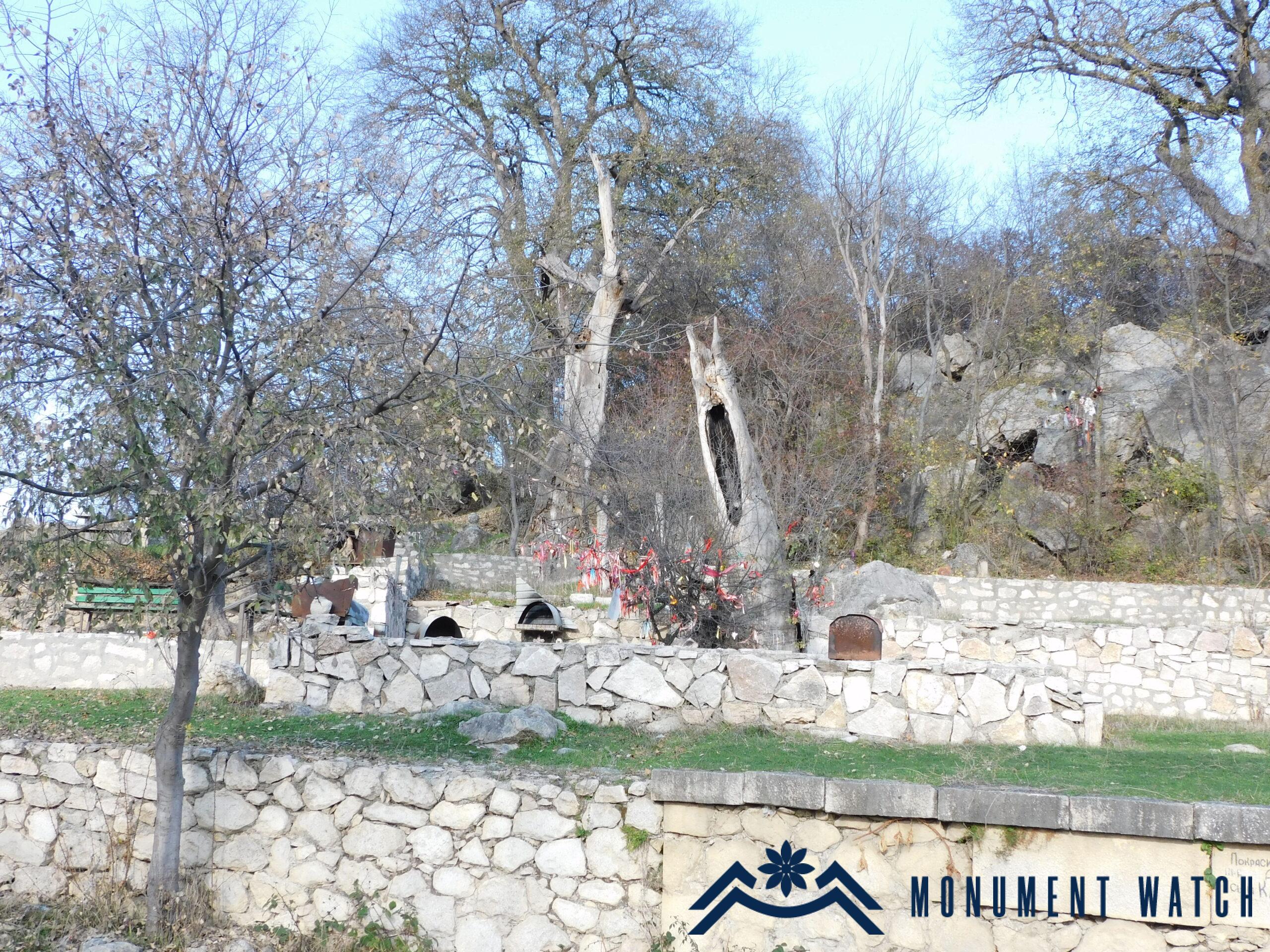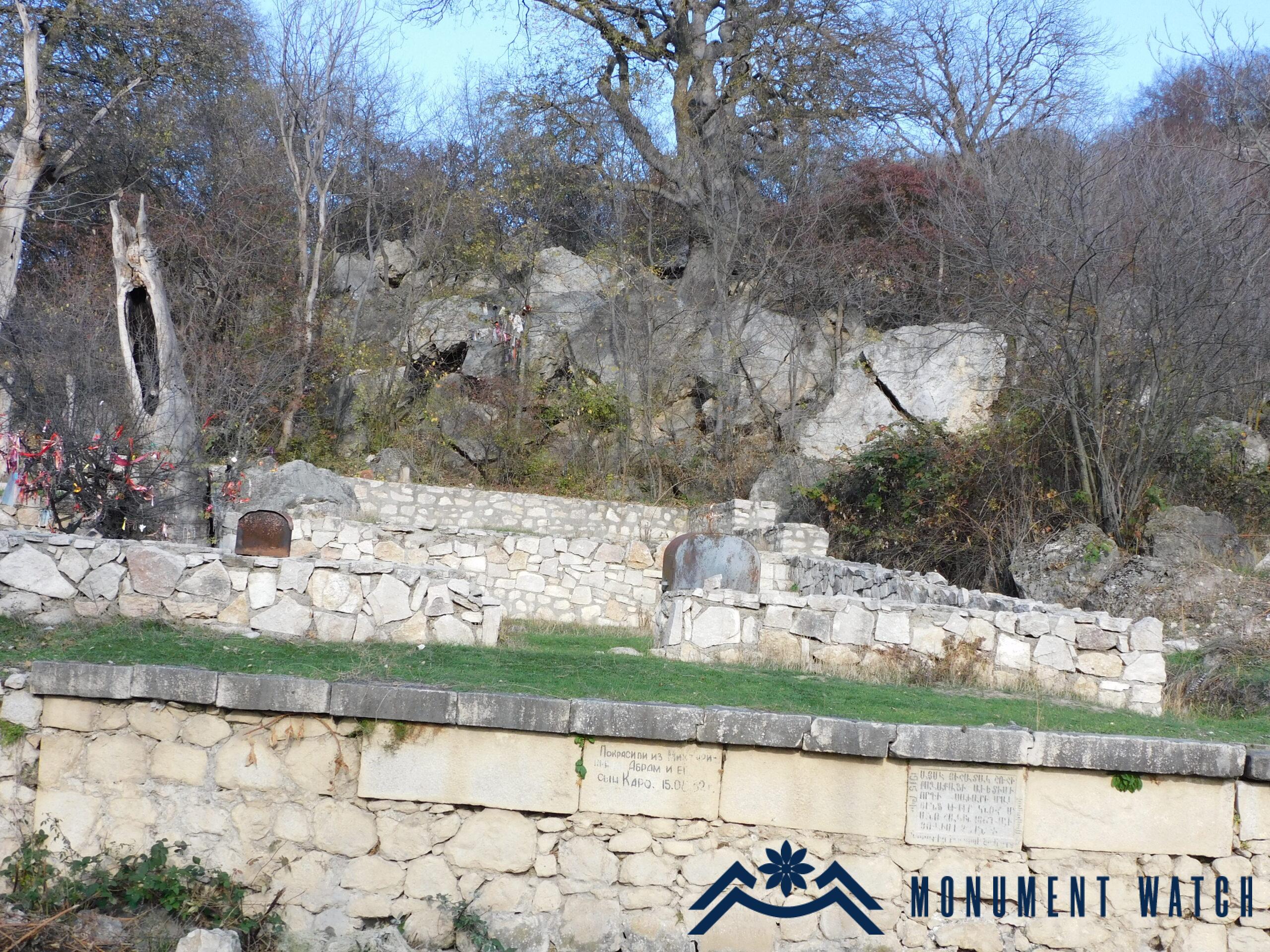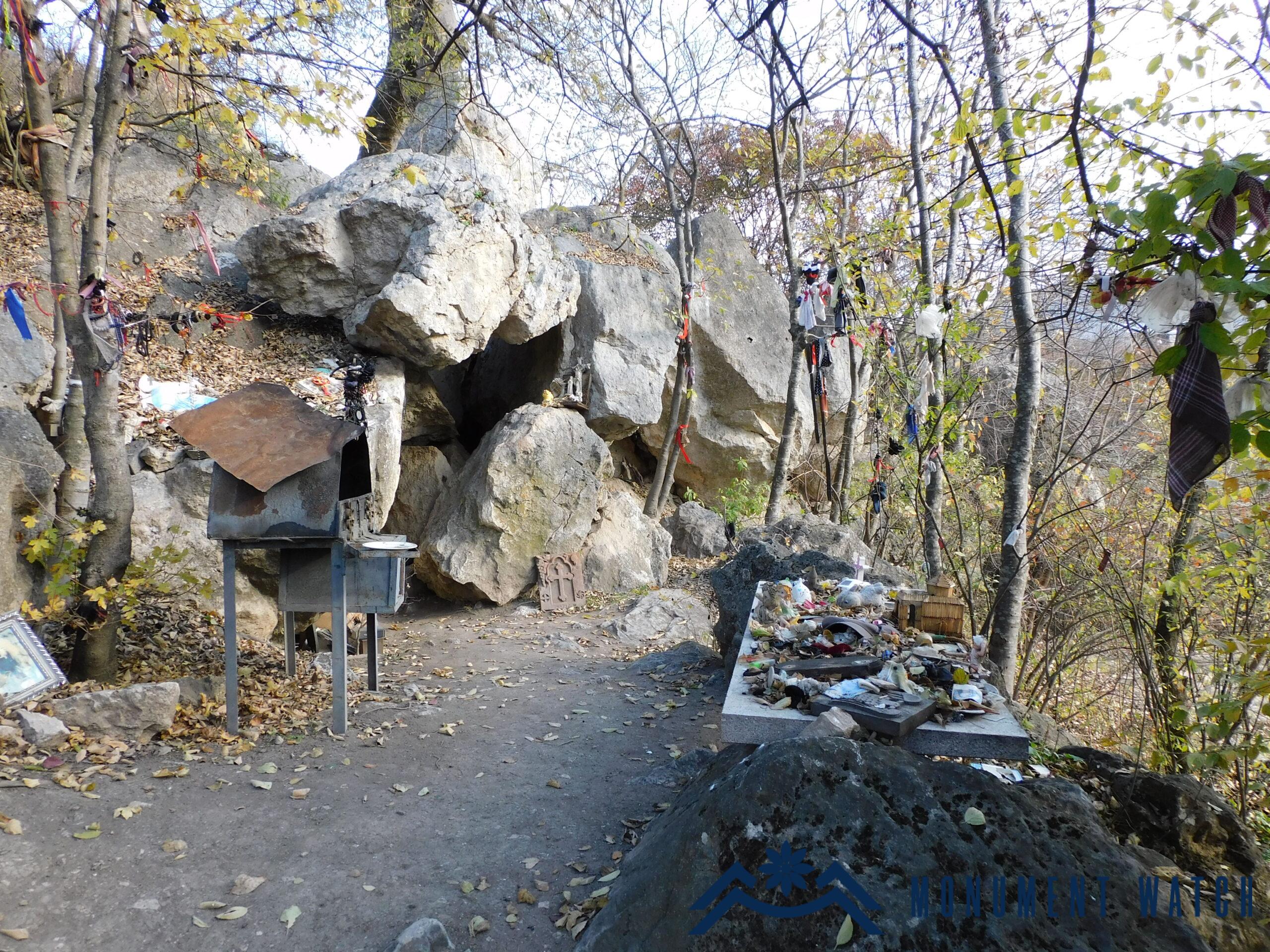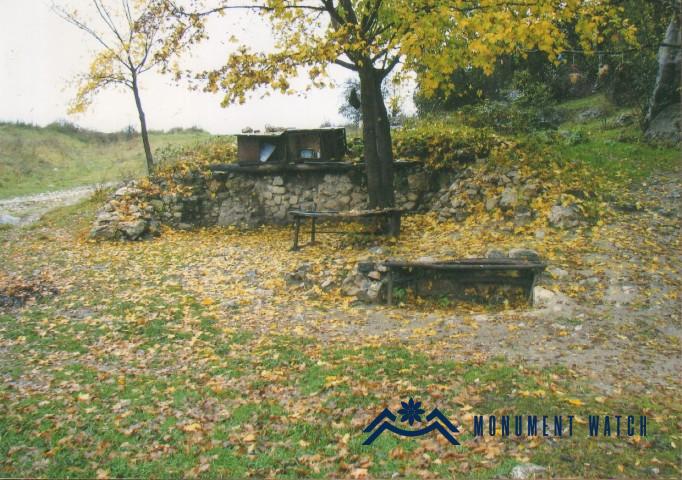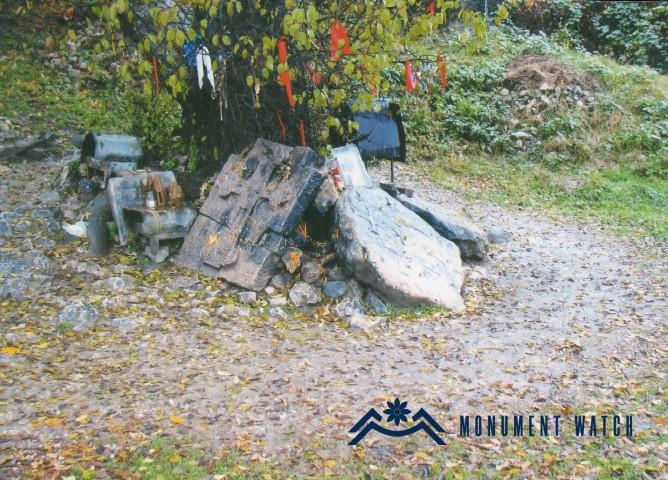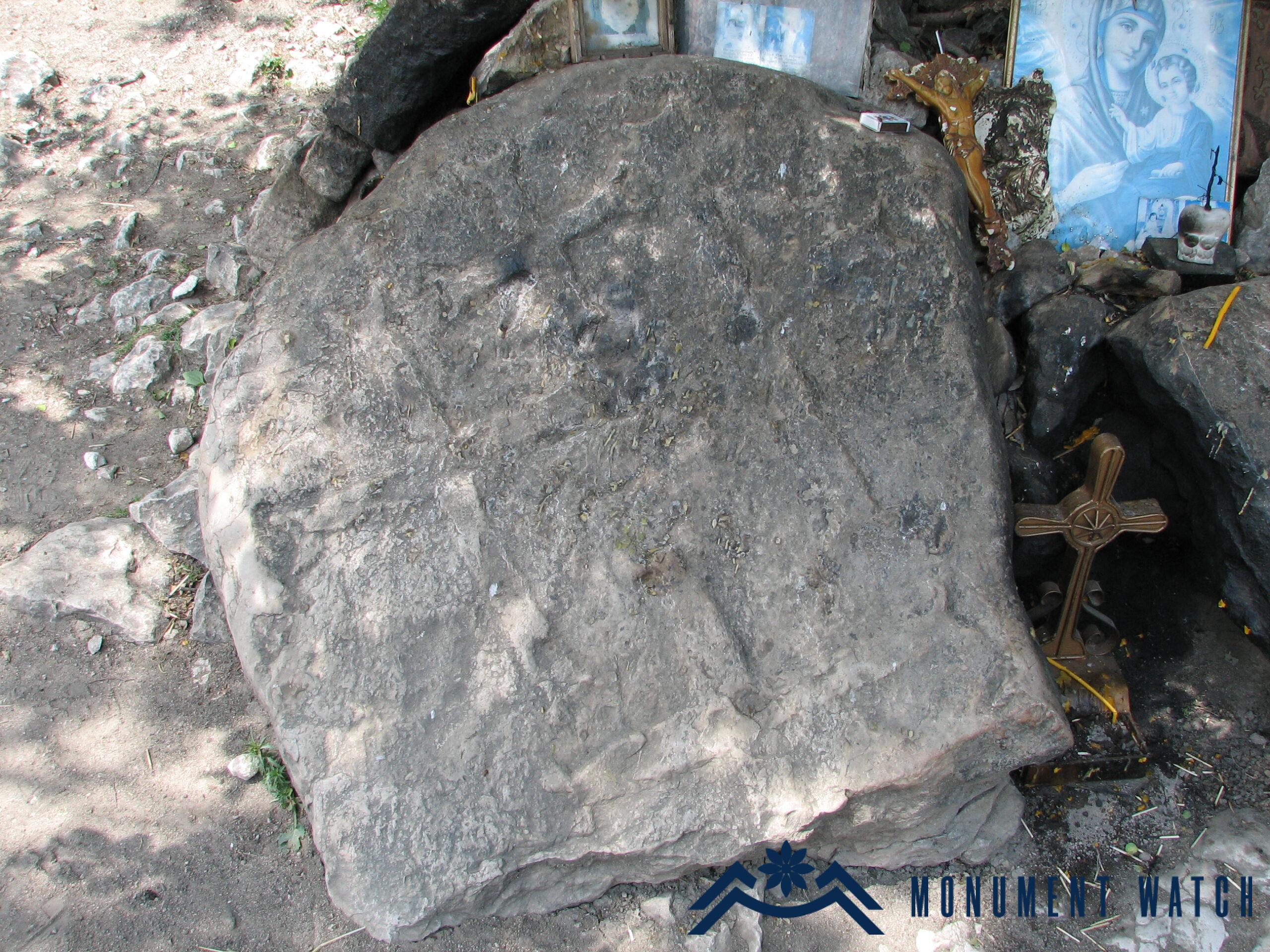The Surb Saribek (Srabek) sanctuary of Karashen (Dashushen)
Location
Karashen village is situated in the Askeran region of the Republic of Artsakh. It is located 23 kilometers from Askeran and 6 kilometers from Stepanakert. Within the village's territory, one can find notable landmarks, including the Surb Astvatsatsin Church (https://monumentwatch.org/en/monument/the-surb-astvatsatsin-church-of-karashen-dashushen/) and the old cemetery, the Karin Jur spring (https://monumentwatch.org/en/monument/the-karin-jur-spring-monument-of-karashen-dashushen-village/), the Bridge of Tadeos(https://monumentwatch.org/en/monument/qarashen-villages-tadeos-bridge/), and The Surb Saribek (Srabek) sanctuary. The village has been occupied by the Azerbaijani army.
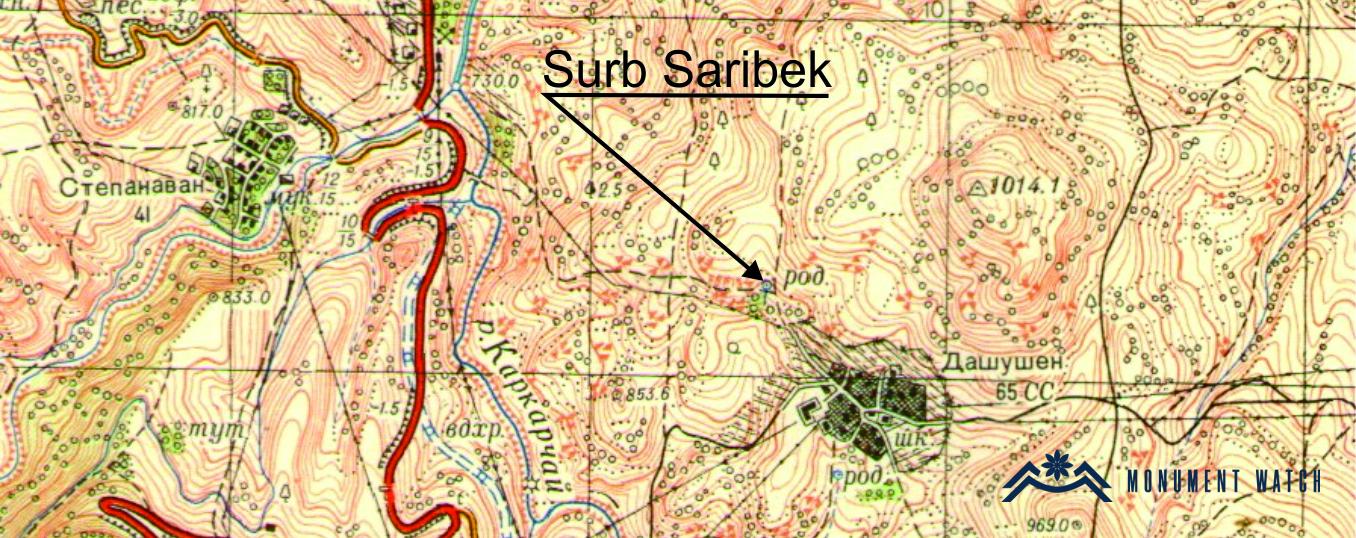
Historical overview
Makar Barkhudaryants provides information about Dashushen village in his work "Artsakh" (Barkhutareants 1895, 131). The author describes the village's location, amenities, and climate, highlighting that the village’s 40 local households are indigenous. He mentions the Surb Srabek pilgrimage site and observes that it attracts numerous pilgrims, primarily from Shushi (Barkhutareants 1895, 131, figs. 1, 2).
E. Lalayan also supplies information about the sanctuary, highlighting that the primary day of devotion at the shrine coincides with the Vardavar holiday (Lalayan 1897, 201). When discussing the veneration of saints, Lalayan recounts the Saribek sanctuary tradition, wherein Turkish brothers and sisters are hosted by a priest from Jerusalem and witness him suspended in mid-air while engaged in prayer. Moved by this extraordinary miracle, the Turkish siblings embraced Christianity and sought refuge in Varanda, accompanied by a newly converted servant. Pursued by the Turks, they met their martyrdom about 10 versts away (one verst being equivalent to 1066.8 meters) from Shushi, on a mountain that now serves as their pilgrimage site. The brother, originally named Martiros, was renamed Srabek due to his martyrdom by the sword, and over time, his name was distorted to Saribek. In the valley, beneath the cover of bushes, lies the spot where the servant met his martyrdom, also a site of pilgrimage. Not far from Saribek stands the location of the sister's martyrdom, and the stone from that place was relocated to the Saribek site (Lalayan 1897, 181).
An alternate tale, as documented by Petrushevsky, portrays Saribek as a noble-hearted man who lived during Temur's incursions. Soldiers from the Chagatai Khanate in Middle Asia sought to capture his sister and subject her to slavery and dishonor, but her brother reclaimed her and, in the process, succumbed to his injuries (Petrushevsky 1930, 22).
When discussing the veneration of trees in Varanda, Lalayan also refers to the three Elm trees of Saribek, among the holy places believed to have the power to cure various diseases and grant wishes. He also recounts an incident from 40 years ago when a resident broke a branch from one of the trees and subsequently became bedridden due to illness who now makes an annual pilgrimage to Surb Saribek to offer vows in the hopes of curing his ailment (Lalayan 1897, 161). Lalayan also highlights the 100-year-old Elm tree of Saribek among the trees believed to possess healing properties. He provides a detailed description of the ritual used to cure impetigo (herpes) disease (Lalayan 1897, 163). Additionally, Lalayan notes that in Saribek, the rocks in the upper section of the sanctuary are considered to have curative properties, and a special ritual is performed around them to alleviate coughs (Lalayan 1897, 155, fig. 3).
Lalayan offers a comprehensive account of the divination ritual that entails measuring the elbow with a span, a practice referred to as "tiz chapel" in Armenian. He also notes that the Saribek sanctuary granted this honor to Mosunts Sandukht (Lalayan 1897, 185).
In June and July of 2011, excavation and cleaning efforts were undertaken in the area (Sargsyan 2015, 178).
Architectural-compositional examination
Surb Saribek (Srabek) is situated in the northwestern section of the village. The sanctuary encompasses consecrated trees, rocks, khachkars, a spring, and remnants of a structure.
The central part of the sanctuary comprises open platforms positioned at two distinct levels, enclosed by rectangular walls and divided by a retaining wall. The entire dimensions of the area measure 13.2 x 10.8 meters. The lower platform is adorned with trees and khachkars, while the upper platform hosts the remnants of buildings and tombstones (Sargsyan 2015, 180).
Remnants of a chapel are also visible within the sanctuary's vicinity. The structure measured 6 meters in length and 4 meters in width. Only the eastern wall, reaching a height of up to 1 meter, has been retained. This structure is believed to date back to the 16th and 17th centuries (Republic of Artsakh Monuments Informative Database, Dashushen village, Srabek Chapel, fig. 4). One of the two khachkars, bearing four crosses (Fig. 5), belongs to the same historical period, while the other is a more recent khachkar from the early 20th century. Both khachkars are positioned adjacent to one of the consecrated trees and hold a prominent place within the sanctuary (Fig. 6).
The area also features a spring with the same name, which includes inscriptions and tombstones with inscriptions. In 2019, a small complex was constructed near the sanctuary in memory of Commander Samuel Vardanyan, with the support of benefactors (Fig. 7).
The condition before, during, and after the war
The Karashen Surb Saribek sanctuary has remained relatively unchanged both before and after the war, preserving its historical and cultural significance.
Bibliography
- Barkhutareants 1895 - Barkhutareants M., Artsakh, Aror, Baku.
- Sargsyan 2015 - Sargsyan G., Excavation-cleaning works of "Surb Saribek" ancient site, Archaeological studies in Artsakh 2011-2012, Stepanakert.
- Lalayan 1897 - Lalayan E., Varanda, Ethnographic Journal, Book II, Tbilisi.
- Petrushevsky 1930 - Petrushevsky I., On the pre-Christian beliefs of the peasants of Nagorno-Karabakh, Baku.
- Informative database of Monuments of the Republic of Artsakh, Dashushen village, Srabek Chapel, http://monuments.nk.am/pages.php?al=home&id=683&act1=more&act=filter&mtype=0&searchword=Դաշուշեն.
- Informative database of Monuments of the Republic of Artsakh, Dashushen village, the Surb Srabek sanctuary http://monuments.nk.am/pages.php?al=home&id=684&act1=more&act=filter&mtype=0&searchword=%D4%B4%D5%A1%D5%B7%D5%B8%D6%82%D5% B7%D5%A5%D5%B6, 26.09.2023.
The Surb Saribek (Srabek) sanctuary of Karashen (Dashushen)
Artsakh
